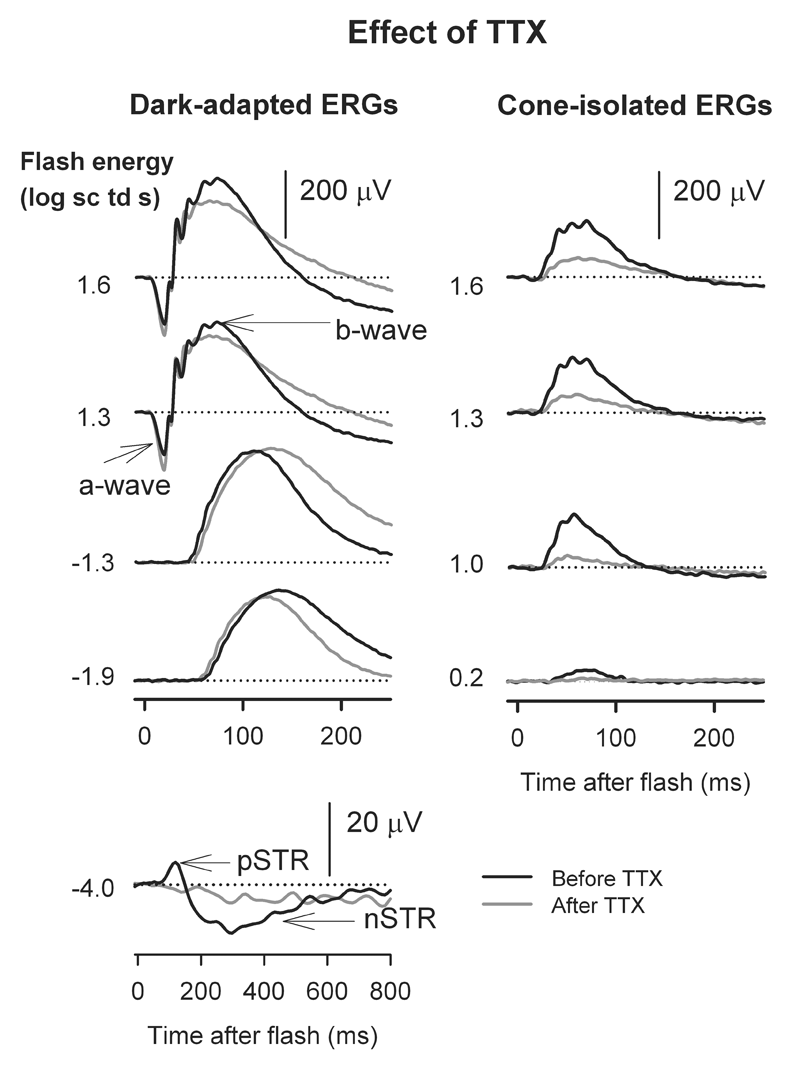![]() Figure 9 of
Mojumder, Mol Vis 2007;
13:2163-2182.
Figure 9 of
Mojumder, Mol Vis 2007;
13:2163-2182.
Figure 9. Tetrodotoxin blockade of Nav channels in the retina attenuated the cone bipolar cell driven b-wave but did not affect the amplitude of the rod bipolar cell driven b-wave
The response before tetrodotoxin (TTX) is indicated by the black traces and after TTX by the grey traces. A: TTX did not alter the b-wave amplitude for low flash energies that elicit rod-driven b-waves (-1.9 and -1.3 log sc td s). However, TTX decreased b-wave amplitude for higher flash energies (1.3 and 1.6 log sc td s) that produced mixed rod+cone-driven electroretinograms (ERGs). B: TTX blockade of Nav channels attenuated the negative and positive scotopic threshold responses (STR), potentials of inner retinal origin in the dark-adapted ERG that occured in response to low flash energies (-4.0 log sc td s in the figure). C: For the same animal, TTX produced a severe attenuation of the dark-adapted cone-isolated b-wave (grey traces) compared to the cone-isolated b-wave before TTX administration (black traces). Note that discernable cone-driven b-waves were produced only for flash energies higher than those that saturated the amplitude of the dark-adapted ERG shown in the left panel (-1.3 log sc td).
